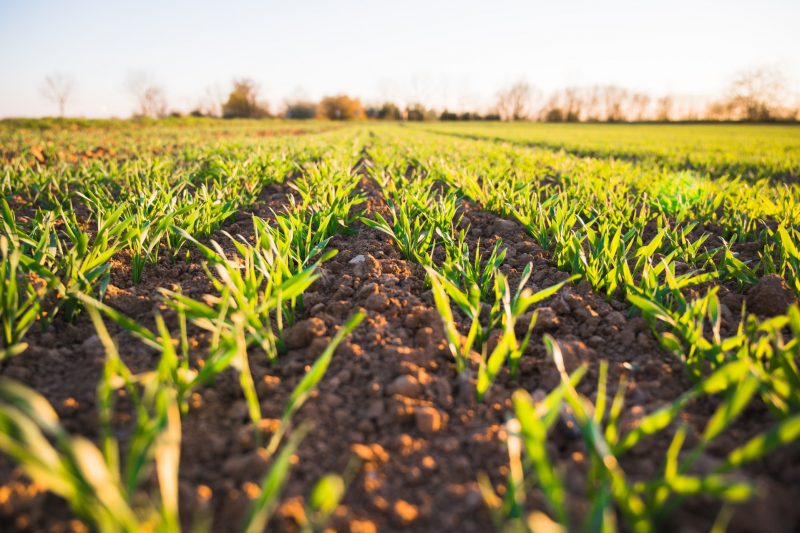Thursday 22nd April is Earth Day, an annual event marked to encourage environmental protection. The first Earth Day was held in 1970 and could be considered as the first contemporary movement about the environment.
In the years leading up to the first Earth Day, we were consuming lots of harmful resources like petrol, using inefficient vehicles and machinery that released lots of emissions, and farming food from unsustainable agriculture. It’s safe to say that things haven’t improved drastically today, as we are continuing to fight to meet sustainability targets for a cleaner and greener world while the population grows exponentially.
While we discuss the impact that we’re having on the planet, agriculture seems to get less media attention than, for example, plastic waste or harmful emissions. Agriculture is incredibly important to the health of our planet and in tackling emissions, so in this article, Traidcraft discusses regenerative agriculture and how this can be used to help the planet cope with around 7.6 billion people.
What is regenerative agriculture?
Regenerative agriculture is a method of farming that helps contribute to reversing climate change through regenerating the nutrients and biodiversity in soil while absorbing carbon dioxide.
The more we farm to feed such a large population, the fewer nutrients and less biodiversity there is to regrow high-quality food. The loss of fertile soil isn’t only damaging to our health as we lose important trace minerals, but damaging to ecosystems too. Through technology, regenerative agriculture can revitalise these ecosystems and biodiversity, reversing the effects of climate change on our soil.
How important is regenerative agriculture?
Topsoil is the uppermost layer of soil that has the highest concentration of microorganisms and biodiversity. This thin layer, which is around five to 10 inches thick, accounts for 95 per cent of all the food produced for the human population to eat. Soil covers 33 per cent of land across the planet and has been highly degraded through intensive farming practices. It is one of the most important environmental considerations of our lifetime.
Healthy soil is like a carbon magnet as it withdraws carbon from the atmosphere through photosynthesis. This is referred to as sequestering carbon in soil and is a natural way to remove dioxide from the atmosphere. Plants then turn carbon dioxide into new leaves and plants and convert leftover dioxide into a sugary substance to feed other microbes in the soil.
Average temperatures of the planet have risen more than 1℃ since pre-industrial times. Almost all of these emissions can be attributed to human activity. While a temperature increase of 1℃ can seem small and insignificant, this tiny number can have extreme impacts on the world, including soil releasing more carbon into the atmosphere. Research has suggested that if all the world’s land sequestered 0.5 tons of carbon per hectare each year, 20 per cent of annual global emissions would be reduced.
Other benefits of regenerative agriculture
There are many other benefits if we take a global shift to regenerative agriculture. These include:
- Diverse acro-ecosystems generate better food. This would feed the world high-quality and nutrient-dense food.
- Decreased greenhouse gas emissions. The food industry currently emits 44–57 per cent of all emissions and could instead be used to reduce emissions.
- Improved yields in extreme and harsh weather.
- Create drought-resistant soil. Healthier soil holds more water and organic matter.
- Support local communities and economies with sustainable family farming.
- Restore vast areas of grasslands.
As humans, we need to eat. As a consumer, you can choose to direct your money where it will matter the most. Buy from ethical companies and organisations that take these issues into consideration. This can be anything from fair trade biscuits to cotton socks, which farm products sustainably without having a drastic impact on our environment.
Sources
https://regenerationinternational.org/why-regenerative-agriculture/
https://www.danone.com/impact/planet/regenerative-agriculture.html
https://ourworldindata.org/co2-and-other-greenhouse-gas-emissions
https://www.traidcraftshop.co.uk/food/snacks/biscuits
https://www.wri.org/blog/2020/05/regenerative-agriculture-climate-change
Minasny, B., Malone, B.P., McBratney, A.B., Angers, D.A., Arrouays, D., Chambers, A., Chaplot, V., Chen, Z.S., Cheng, K., Das, B.S. and Field, D.J., 2017. Soil carbon 4 per mille. Geoderma, 292, pp.59-86.
https://blogs.ei.columbia.edu/2018/02/21/can-soil-help-combat-climate-change/










